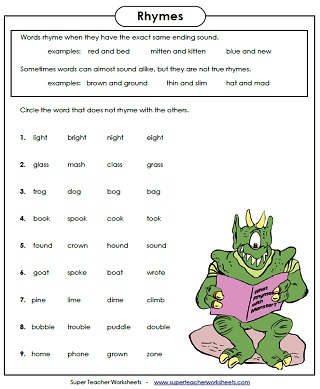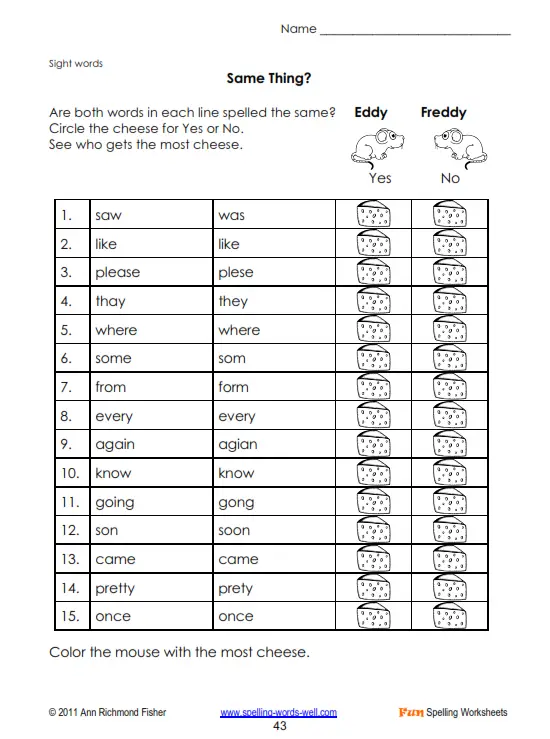
#1ST GRADE LEVEL WORDS THAT RHYME WITH PICTURES HOW TO#
Delete/manipulate sounds in spoken words (What is "cat" without the /k/? - "at"īasically, phonemic awareness skills include learning how to break apart (segment) and combine (blend) the sounds in words.Segment words into sounds (cat = /k/- /a/ - /t/).Blend separate sounds (phonemes) into words (/k/- /a/ - /t/ = cat).Isolate and say the first/last/middle sound/s in a word (cat begins with the /k/ sound and ends with the /t/ sound, etc.).Recognize words in a set begin with the same sound (cat, cake, kite all begin with the /k/ sound).Keep in mind, all of these are done at the auditory/spoken level, NO print: The following is a list of specific phonemic awareness skills. If we put phonological awareness skills on a continuum, phonemic awareness is the most sophisticated and last to develop. It is a specific skill under the broad category of phonological awareness. Let’s take a closer look at phonemic awareness.

Understanding and manipulating the three sounds in “cat” = /k/ /a/ /t/.Understanding the word “cat” as one syllable.Understanding two words become one in a compound word: cat + fish = catfish.Understanding the words “cat” and “fat” rhyme.Understanding that the sentence they hear, “Thecatisfat” is comprised of four separate words “The cat is fat”.As phonological awareness skills develop, children will begin to attend to, discriminate, remember, and manipulate (segment/blend) words and sounds at these levels or chunks: It is a broad term and comprised of a group of skills that progress developmentally, but of course, overlap as children mature. Skills are at a listening/auditory and spoken/verbal, level – NO print – spoken words requiring ears only!

Phonological Awareness is the ability to hear and manipulate parts of spoken language. “Phonological awareness,” “phonemic awareness,” and “phonics,” are literacy terms we often hear used simultaneously, and maybe even interchangeably! However, as we work with children, helping them to develop a strong foundation of literacy and language skills, we must realize the important distinction between these terms.


 0 kommentar(er)
0 kommentar(er)
